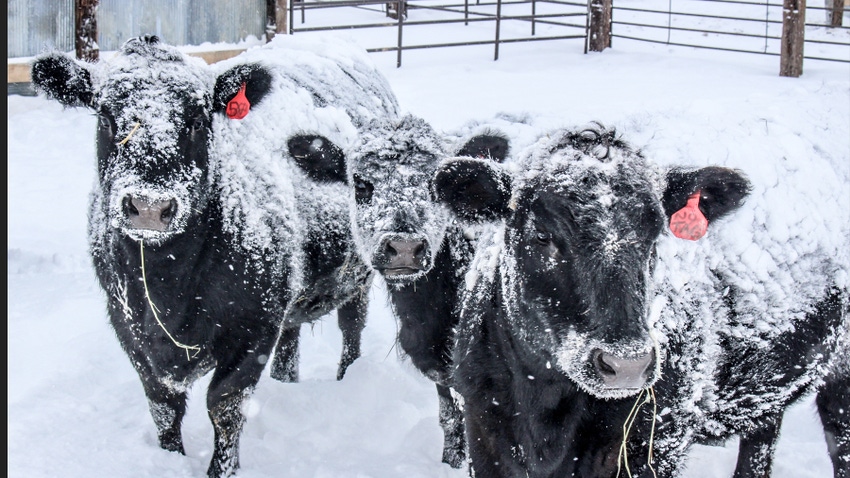
With water serving as the most vital compound for cattle, ensuring that grazing animals keep hydrated in the winter can pose a challenge with frozen wells and tanks. North Dakota ranchers Joe Fritz and Donnie Feiring share what works best for their holistic management operations.
“Our tanks are on a 6-foot buried pipeline,” says Fritz, who ranches northeast of Beach. His watering system consists of two 12-foot fiberglass tanks, which are connected to a well over 3 miles away. “One is a summer tank, and one is insulated. We use them both all winter long with no issues, as long as there’s enough livestock on them.”
The tanks fill from the bottom, which Fritz says has been beneficial: “In our experience, these have just worked better and come with more flexibility than hydrants for the winter.”
Around both tanks, Fritz installed metal pipe paneling to keep animals and his system safe. “I went to a paneling system to ensure no calves could get in there, and I was tired of livestock wrecking them,” he says.
The design was chosen, so even if animals get into the paneling, the risk of valves becoming damaged is reduced.

STURDY: Joe Fritz’s winter water system stays protected from curious cattle with pipe panels installed around the outside. He says even if cows get knocked into the fence, the valves stay safe. (North Dakota Grazing Lands Coalition)
Along the North Dakota Montana state line lies Donnie Feiring’s ranch. He says their operation faces extreme weather conditions, so adequate water is essential. “We can hit −35 degrees [F] in the winter, and 105 degrees in the summer,” he states.
Their winter watering systems consist of frost-free tanks. “It’s about 660 gallons here, and we dug it into the side of the hill,” he says. “We like these because there’s no power to them. It opens up our grazing window in that April-May time and throughout the winter.”
The tanks are built into the ground, providing protection and increased insulation from the environment. With treated lumber covering the front of the tank, supported by railway ties, Feiring says the tanks are hardier.
Tricks of the trade
Chopping ice on water tanks is a daily task for Northern ranchers, with Fritz being no different. “When it gets really cold, we do have to chop ice,” adding that once the cattle start drinking, the tanks stay open.
Feiring’s tanks face the same fate when temperatures stay below zero. “We get four or five days of 10 below zero and lower, and we’re out here chopping ice on a regular basis,” he says.
But Fehring has a few tricks to keep tanks from freezing as often. “We’ve learned over the years that the trick is to keep over 100 cows on them,” he explains. “This gives enough water flow and water comes up underneath. And down to around zero degrees, they stay open.”
Orienting the tanks facing the southeast to catch any northern sunrays also help thaw waterers. “That sun will get here for just a few hours, and you’ll be amazed the difference that heat makes pitched to the southeast,” Feiring says.
Fritz’s final advice for winter water systems? Don’t short yourself on volume. “As you manage your grass, your herd sizes become concentrated on grass sites,” he says. “Have abundant volume in your build, or you’ll be sorry.”
Both Fritz and Feiring serve as mentors with the North Dakota Grazing Lands Coalition, sharing their years of advice with fellow ranchers looking to create more holistic management on their operations.
“There’s a wealth of knowledge you can find from one ranch to another,” Feiring says.
To find a mentor and discuss winter water systems and more, go online to North Dakota Grazing Lands Coalition Mentor Network.
Read more about:
Animal WelfareAbout the Author(s)
You May Also Like






